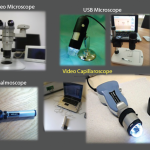Capillaroscopy has an important role in this setting since several currently available drugs can affect vascular remodeling. Recently, we obtained exciting results (currently being prepared for publication) that show a significant reduction of the capillary loss, as evaluated by videocapillaroscopy in SSc patients treated with a combination of intravenous prostanoids and endothelin receptor blockers. Other provocative data on this issue relate to the reduction of the microvasculature damage (regression of the early capillaroscopic markers [i.e., giant capillaries and microhemorrhages] and reversal of the qualitative patterns) observed with immunosuppressive therapies (see Figure 15). Since immunosuppressive therapies which block immune activity may prevent secondary tissue injury and fibrosis, cyclosporin has been tested as a treatment in SSc patients. Studies on the effect of this agent have shown a substantial impact on clinical symptoms after 12 months of treatment with, interestingly, a concomitant reversal of the capillaroscopic advanced patterns.24,25 Similarly, cyclophosphamide administration was found to be significantly associated with a regression of the capillaroscopic patterns, and none of the SSc patients who received the drug demonstrated worsening of microvascular lesions.26 Of note in this study, the progression of the capillaroscopic pattern was inversely and significantly correlated with cyclophosphamide treatment.
In a further study, intensive immunosuppressive treatment with cyclophosphamide was shown to ameliorate microvascular damage in patients with SSc as observed by rapid improvement of the NVC pattern.27 Together, these observations indicate a role of NVC in assessing treatment responses in SSc.
Further Perspectives and Conclusions
In 2001, a study reported that the sensitivity of the ACR criteria in identifying patients with limited SSc improved from 34% to 89% with the addition of nailfold capillary abnormalities and the presence of visible telangiectasias.9 More recently, in another study, the sensitivity of the criteria increased from 67% to 99% with the addition of nailfold capillary abnormalities identified using a dermatoscope and visible telangiectasias.6 At present, an updating of the classification criteria for SSc including the capillaroscopic analysis is in progress. In an effort to extend and refine the seminal studies on capillaroscopy performed in the United States 35 years ago, an ACR study group was formed in 2010.28 In addition, a practical atlas on capillaroscopy in rheumatic diseases is now available, signifying the interest in this technique and a guide for lesion assessment.29
In conclusion, a final message for readers of this review is to consider capillaroscopic analysis as a fundamental element to achieve at least two goals in the evaluation of patients presenting with symptoms of cold hands: 1) differential diagnosis between primary and secondary Raynaud’s phenomenon; and 2) early diagnosis of SSc. Further, capillaroscopic analysis can provide valuable information to help assess disease prognosis and evaluate the response to therapy in patients with SSc. From its beginning, capillaroscopy has represented a unique imaging tool that is simple, objective, totally safe (it is a microscope) and can help rheumatologists both document and understand the complex vascular phenomena. As recent study results show, the promise of capillaroscopy remains great, with its continued use to study patients with SSc hopefully providing new insights into one of the most serious and confusing diseases in all of medicine. Capillaroscopy also may facilitate much-needed advances in treatment.

